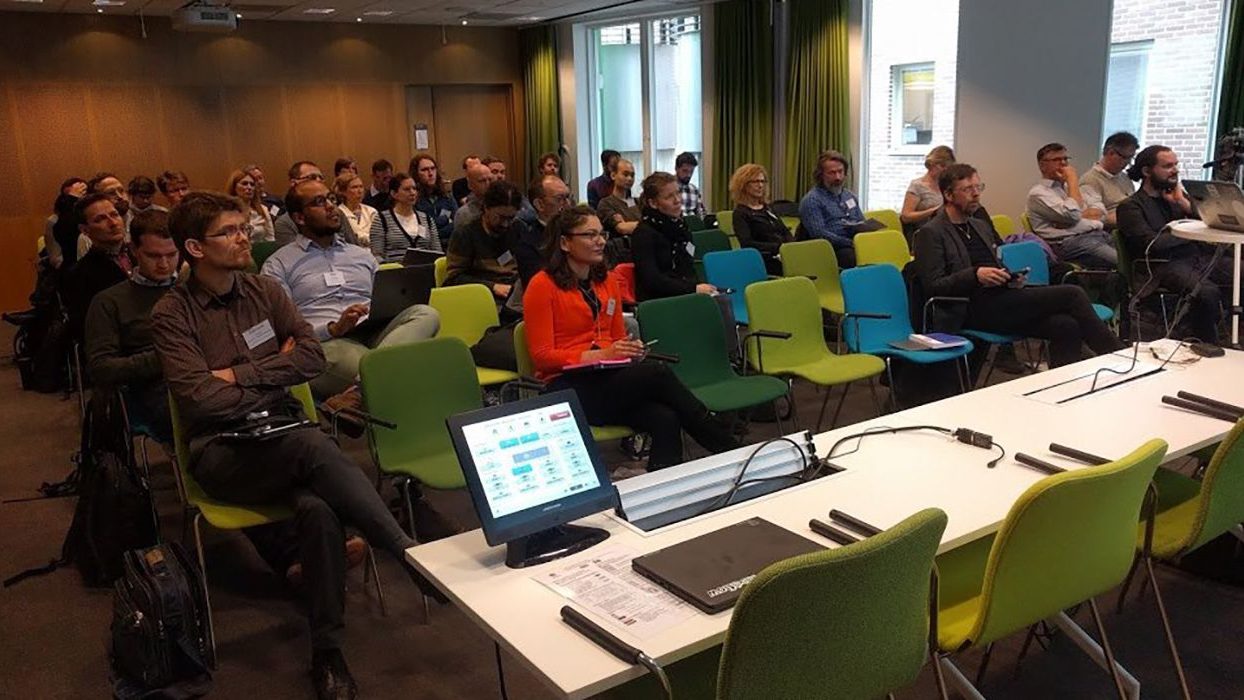MetaSolutions is proud to be one of the organizers of this years symposium on Linked Data in Sweden. It took place in Uppsala last week and around 40 persons with a diverse background, from all over Sweden, attended. The entire day was recorded for the benefit of posterity and those who could not attend. You can find the links to the videos and some of the presentations in the agenda.
Matthias Palmér from MetaSolutions started the day with a tutorial to introduce newcomers to the field. In one hour the why, what and how’s of Linked Data was touched briefly. There are also links in the slides for those who want to dig deeper.
Johan Rung, from the hosts SciLifeLab, gave us a brief overview of the challenges within the Life Science domain regarding large volumes of data and the strive toward more self service of data intensive services. Samuel Lampa from farmb.io recounted the various approaches he had undertaken to work with large datasets expressed as linked data, the take home message was that it is feasible today. Fernanda Dórea, SVA, gave us an outline of what is happening in the veterinary domain and talked about the opportunity to reconcile the differences of a multitude of data collected by many parties into a joint data model using linked data techniques.
Then Olof Karsvall from Riksarkivet gave us an overview of a new service providing historical points of settlement units as linked data. The data contains manually curated names and position of villages before the modern era which can be interlinked with other datasets such as historical events and images from the Royal Library.
Ulrika Dommelöf-Mattsson from Naturvårdsverket and Hannes Ebner from MetaSolutions presented a project where a linked data metadata model for decision documents had been established and will now be used to harvest documents from other organizations into a central repository.
After lunch the focus shifted somewhat toward cities and the building sector. First out was Fredric Landqvist, Findwise, who told us about the progress in Göteborg to bring persons, organizations, places and services into a common data model. By using the European Union’s initiative around Core Vocabularies the model has progressed fast and has now a firm base on established standards. He also mentioned problems with quality and how to reconcile different datasets when creating a joint data-model. Erik Wallin, from Klipsk, talked about the problem of maintaining modern buildings and introduced the ontology RealEstateCore that encompasses building elements, sensors, control and operation. The ontology is open and being implemented by a consortium including Vasakronan, Akademiska hus and Willhem. Olle Bergdahl, Uppsala kommun, described the complexity of a modern city and presented challenges with regard to open data and collaboration among cities.
In the afternoon we agreed on some topics and split into groups for more focused discussions. The topics where (roughly) “How to communicate around linked data”, “Linked data for the City, the building sector and public sector in general” as well as a more technical group exchanging experiences regarding “tools and implementation aspects”.
After a break Valentino Hudhra from MetaSolutions talked about how to both present and edit linked data from various sources in a unified way without mixing them. Valentino showed a demo where information about Pablo Picasso (originating from Wikipedia) where enhanced. All information where shown in a single form with clear markings of the origin (Wikipedia information shown read-only).
Myles Byrne, Institute for Molecular Medicine Finland, gave an engaging speech about the changes taking place within the area of academic publishing. He talked about how decentralization, new journal formats and open science is changing the scene.
The last speaker of the day was Andrii Berezovskyi from KTH who argued for building Linked Data service layer (he referred to it as Linked Data Apps) to isolate from the specifics of business services. He argued that W3C recommendations including LDP, LDN, SHACL etc. will be useful in this setting. There was a brief proof of concept demo as well as a more advanced integration of the issue management systems JIRA and Polarion.
The day ended with an open discussion around the topic, “how do we push the new digitization agency toward Linked Data”. This and other inspired discussions continued at the social event which where joined by around 20 of the participants.

